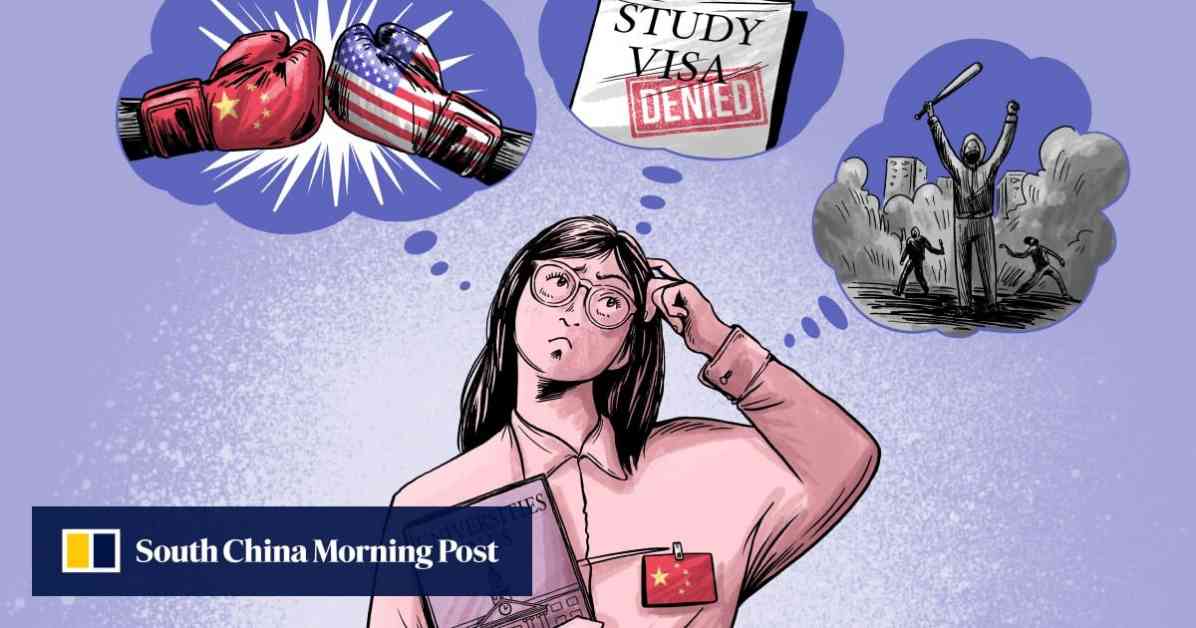As Chinese students turn away from pursuing degrees in the United States, the ramifications are felt not only within the country but also across borders. The decline in enrollment of Chinese students in US universities has had a significant impact on the pool of talent available in the US, while simultaneously bolstering the educational landscape in China. This shift in preferences among Chinese students can be attributed to various factors, ranging from geopolitical tensions to concerns about safety and cost.
Factors Influencing the Decline
One of the primary reasons for the decrease in Chinese students seeking US university degrees is the escalating geopolitical tensions between the two countries. The US government’s decision to place sanctions on certain Chinese universities, such as the Nanjing University of Science and Technology, has created a sense of uncertainty for Chinese students. Rafael Wang’s experience is a poignant example of how these sanctions can disrupt academic plans and force students to seek alternatives in other countries.
Moreover, the rise in anti-Asian sentiment in the US, exacerbated by the pandemic, has fueled concerns among Chinese students about their safety and treatment upon entering the country. There have been reports of Chinese nationals being interrogated or accused of being foreign agents upon arrival, further contributing to the apprehension felt by prospective students.
Additionally, the cost of living and studying in the US has become a deterrent for many Chinese students. The high tuition fees, coupled with the expenses of books and living arrangements, make pursuing a degree in the US financially burdensome. Comparatively, universities in China offer more affordable options for education, making them an attractive alternative for students seeking quality education without the exorbitant costs associated with studying abroad.
Impact on US Talent Pool
The decline in Chinese student enrollment in US universities has not only affected the diversity of the student population but also has implications for the scientific and research community in the country. Chinese students, particularly those pursuing advanced degrees in science, technology, engineering, and mathematics (STEM) fields, have been a valuable source of talent for research and innovation in the US. However, the perceived unwelcoming environment and visa restrictions have led many of these talented individuals to seek educational opportunities elsewhere, depriving the US of their expertise and contributions.
Rory Truex, an assistant professor at Princeton University, highlights the importance of Chinese students in the American scientific and research enterprise. He notes that the current strategic competition between the US and China is centered around human capital, with Chinese students playing a crucial role in driving innovation and advancement in key industries. The decline in their presence in US universities could have far-reaching consequences for the country’s competitiveness and leadership in scientific research.
Rise of Chinese Universities
In recent years, Chinese universities have made significant strides in improving their teaching and research capabilities, leading to a rise in their global rankings. The British Council’s study highlighted the higher average scores achieved by Chinese universities in teaching and research, signaling their growing competitiveness on the international stage. With 13 Chinese universities making it to the Times Higher Education World University Rankings in 2024, the value of a foreign degree has diminished in comparison to the quality of education offered by institutions in China.
Deborah Seligsohn of Villanova University emphasizes the shift in perception towards Chinese universities, noting that a degree from a Chinese institution can now be viewed as a viable and competitive option for students. The return rate of Chinese students from overseas has also increased significantly, with more than 80% of students choosing to return to China by 2019. This trend indicates a growing confidence in the quality of education and job prospects available in China, prompting students to reconsider the necessity of pursuing a degree abroad.
Challenges and Opportunities
While the decline in Chinese student enrollment poses challenges for US universities and the scientific community, it also presents opportunities for collaboration and exchange between countries. The need to foster a welcoming and inclusive environment for international students, regardless of their nationality, is paramount in ensuring a diverse and vibrant academic community.
Efforts to address the concerns of Chinese students, such as enhancing safety measures, providing support services, and promoting cultural exchange, can help alleviate anxieties and attract talented individuals to US universities. Collaborative initiatives in research and innovation can also bridge the gap between countries and harness the collective expertise of students and scholars from diverse backgrounds.
In conclusion, the decline in Chinese student enrollment in US universities reflects a complex interplay of geopolitical, economic, and social factors. While the shift in preferences presents challenges for the US, it also offers an opportunity to reevaluate and strengthen partnerships with international students and institutions. By fostering a welcoming and inclusive environment, promoting diversity and innovation, and embracing collaboration, US universities can navigate the changing landscape of global education and research.



















